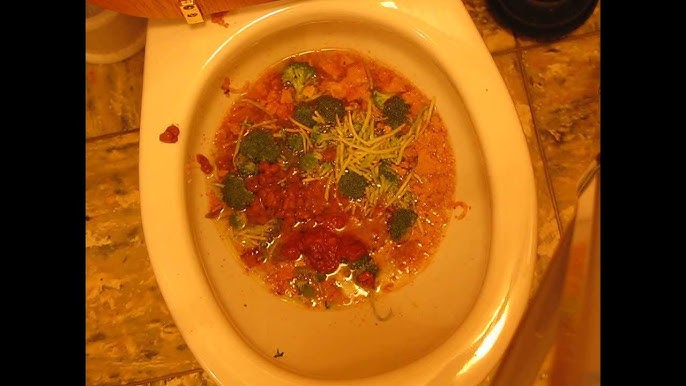Can You to Dispose of Food in the Toilet?
Can You to Dispose of Food in the Toilet?
Blog Article
Are you trying to find tips around Think Twice Before Flushing Food Down Your Toilet?

Introduction
Many individuals are commonly faced with the predicament of what to do with food waste, particularly when it involves leftovers or scraps. One common inquiry that emerges is whether it's alright to purge food down the bathroom. In this post, we'll delve into the reasons that individuals may think about purging food, the consequences of doing so, and different approaches for appropriate disposal.
Reasons why individuals may take into consideration purging food
Absence of recognition
Some individuals might not know the possible injury triggered by purging food down the toilet. They may erroneously believe that it's a safe technique.
Convenience
Purging food down the commode might look like a fast and simple option to disposing of unwanted scraps, specifically when there's no neighboring trash bin offered.
Negligence
Sometimes, people might simply pick to flush food out of sheer negligence, without thinking about the repercussions of their actions.
Repercussions of flushing food down the commode
Ecological impact
Food waste that winds up in waterways can contribute to pollution and injury marine environments. In addition, the water made use of to flush food can stress water resources.
Pipes problems
Flushing food can lead to stopped up pipes and drains pipes, causing expensive plumbing fixings and hassles.
Sorts of food that must not be purged
Coarse foods
Foods with fibrous textures such as celery or corn husks can obtain entangled in pipes and cause clogs.
Starchy foods
Starchy foods like pasta and rice can soak up water and swell, leading to clogs in pipes.
Oils and fats
Greasy foods like bacon or food preparation oils need to never be flushed down the commode as they can strengthen and create clogs.
Proper disposal techniques for food waste
Utilizing a waste disposal unit
For homes geared up with garbage disposals, food scraps can be ground up and purged with the plumbing system. Nonetheless, not all foods are suitable for disposal in this way.
Recycling
Certain food product packaging materials can be recycled, minimizing waste and reducing environmental impact.
Composting
Composting is an eco-friendly way to get rid of food waste. Organic materials can be composted and utilized to enhance soil for gardening.
The value of proper waste management
Decreasing environmental damage
Appropriate waste monitoring methods, such as composting and recycling, assistance minimize air pollution and maintain natural resources for future generations.
Securing pipes systems
By avoiding the technique of flushing food down the commode, house owners can avoid pricey plumbing repairs and maintain the stability of their pipes systems.
Final thought
Finally, while it might be tempting to flush food down the toilet for comfort, it is essential to understand the prospective repercussions of this activity. By taking on appropriate waste management practices and throwing away food waste sensibly, people can contribute to healthier plumbing systems and a cleaner atmosphere for all.
FLUSH FOOD DOWN THE TOILET?
FLUSHING FOOD CAN CAUSE BLOCKED DRAINS IN YOUR HOME
All of the plumbing fixtures in your home are connected to the same sewer pipe outside of your home. This outdoor sewer pipe is responsible for transporting all the wastewater from your home to the Council sewer mains. Even small pieces of food that go down the kitchen sink can cause problems for your sewer. It should therefore be obvious that flushing larger bits of food, such as meat, risks a clog in either the toilet itself or the sewer pipes. Flushing greasy food is even more problematic because oil coagulates when it cools, coating the interior lining of your pipes.
THE TOILET IS NOT A BIN
Food isn’t the only thing that people shouldn’t be flushing down the toilet. People use the toilet to dispose of all kinds of things such as tampons, makeup wipes, dental floss, kitty litter and even underwear. Water goes to great lengths to educate residents about the high costs and stress placed on wastewater treatment systems simply from people flushing the wrong stuff down the toilet. It costs taxpayers millions of dollars each year, and homeowners thousands in blocked drain repairs.
FLUSHING FOOD IS A WASTE OF WATER
Flushing food is a waste of our most precious resource - water. In June this year Level 1 water restrictions were introduced to protect water supply from drought conditions. Much of New South Wales continues to be affected by prolonged drought with recent figures revealing up to 97 per cent of the state remains in drought. Depending on whether you have a single or dual flush toilet, every single flush uses between five and 11 litres of water. In the current climate this is a huge amount of water to be wasting on flushing food that should be placed in the bin (or better yet, the compost).
https://www.jabplumbingsolutions.com.au/blog/can-you-flush-food-down-the-toilet

I discovered that blog posting on Is it safe to flush food (especially rice) down the toilet? while doing a search on the internet. Sharing is good. One never knows, you may very well be helping someone out. Thanks for being here. Revisit us soon.
Click Here Report this page